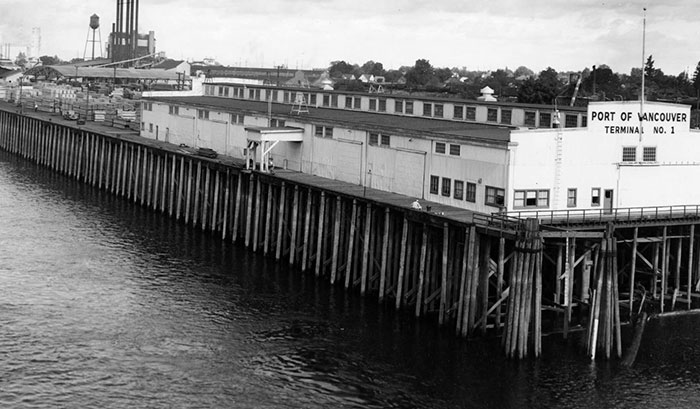Port, city and Red Lion enter new chapter in partnership
Before there was a Port of Vancouver USA, the city of Vancouver owned a public dock nestled between the Interstate Bridge and the city’s industrial and marine areas. Anyone could tie up a boat, deliver or take on goods, and access the north bank of the Columbia River. Fast-forward to the 21st century, and this humble beginning is now part of the port and home to Washington’s first Red Lion Hotel and iconic The Quay Restaurant.
How did we get from a wooden municipal dock to hotels and restaurants? Time and partnerships.
The port was established in April 1912, and for more than a century, we’ve been working with local agencies and other partners to support our community’s economic health and prosperity. In the early 1900s, as today, the port attracted industry, brought jobs to Clark County and ensured local products moved from source to market.
In 1918, the city of Vancouver and the port both leased waterfront property to shipbuilder G.M. Standifer Construction Corporation. Standifer built steel and wooden ships at its Vancouver locations between 1918 and 1921 to aid in the World War I effort.
Construction at Standifer slowed at the close of the war, and in the early 1920s the city and port joined forces to repurpose the old shipyard. By 1925 the partners completed construction on a large warehouse and dock where the Red Lion Hotel sits today. The city then conferred the facilities and their operations to the port, and the site became Terminal 1 – the birthplace of the port of possibility.
Terminal 1 was used for a variety of trade up and down the Columbia River and beyond. Early Port of Vancouver tenants included Washington Canners Cooperative, Pacific Continental Grain Company and Vancouver Plywood. River trade was robust, and Washington state prunes, grain, lumber and paper products began flowing from Clark County to the nation and world.
As the century rolled on, more industry came to the Port of Vancouver. In 1942, Kaiser Shipbuilding leased property and began constructing ships that would sail from Vancouver to support Allied efforts in World War II. At its peak, Kaiser employed an estimated 38,000 workers, many of whom settled in the Fruit Valley neighborhood adjacent to the port.
After Allied victory in 1945, wartime waned and changes were on the horizon. National infrastructure was expanding by leaps and bounds, including highways in the Pacific Northwest. In 1958, the Washington and Oregon departments of transportation completed work on the southbound span of the Interstate Bridge. The new span’s proximity to Terminal 1 required removal of more than 100 feet of dock, rendering the terminal too small to support large ships that berthed there in the past. It was clear that a new direction was needed for this ideal waterfront location.
In 1959, The Quay Inc. leased the property and built a restaurant using part of the original Terminal 1 warehouse. Several rounds of expansion, including construction of the Red Lion hotel, began in 1965. The Centennial Center, a 4,557-square-foot meeting facility, was completed in 1973. Through it all, the port and Red Lion worked closely together to build a venue that reflected the needs of the property and surrounding community.
During its decades of growth in Vancouver, Red Lion was also expanding across the Pacific Northwest and nation. The company now offers hotels in a variety of locations throughout 10 U.S. states and one Canadian province.
Now, 55 years after The Quay Inc. first transformed an old prune warehouse into a Pacific Northwest destination, the winds of change are blowing again and moving our community’s waterfront in a new direction.
The city of Vancouver and its economic development partners, including the port, are working to create a vibrant waterfront community that will be home to jobs, restaurants, shops, housing, hotels and parks. Red Lion Corporation, as an institution in our community and a valued, longtime partner of the port, will be a key participant in those efforts.
We look forward to continuing our partnership for decades to come as we all look toward the Columbia River waterfront and our community’s bright future.

